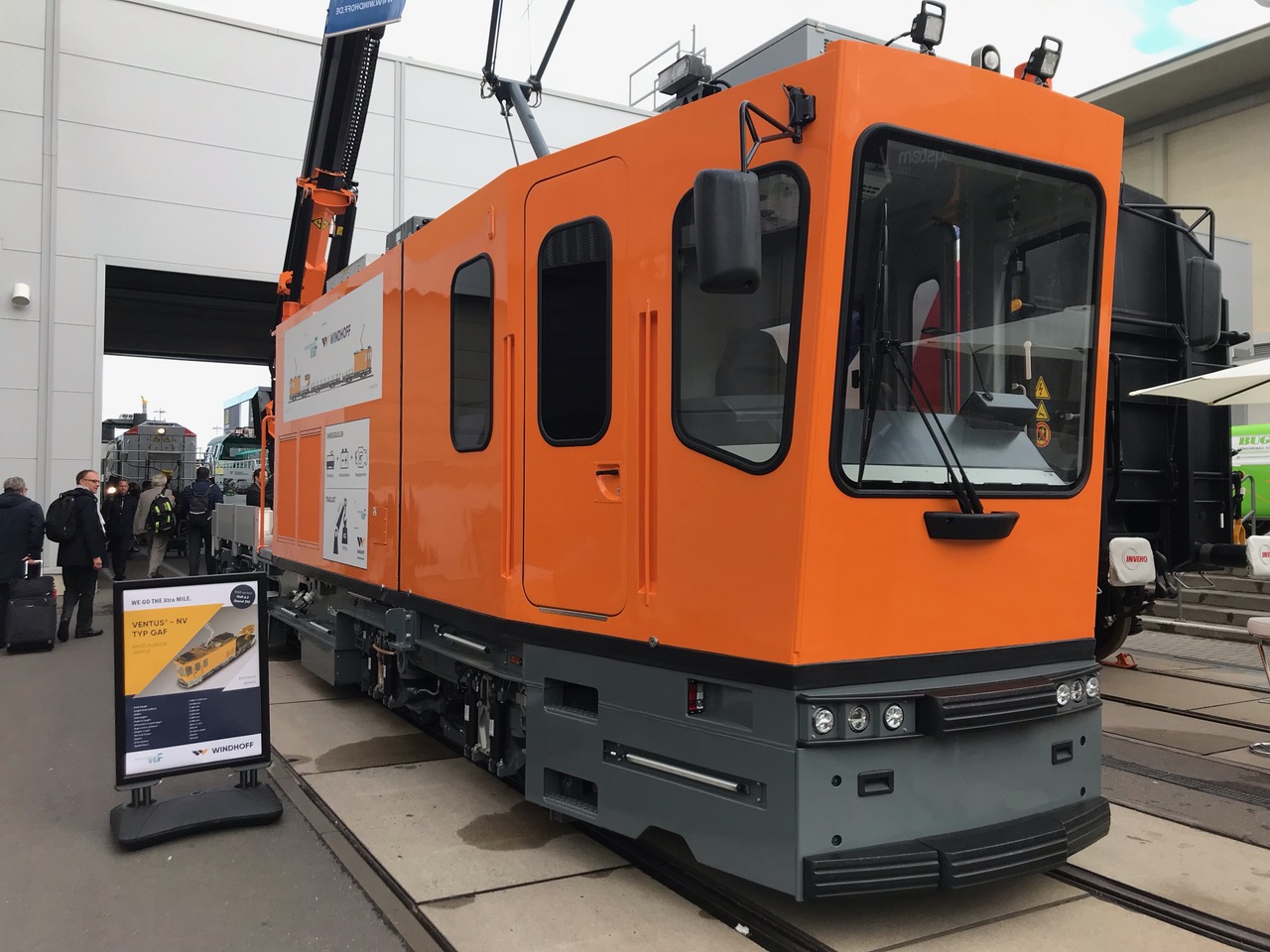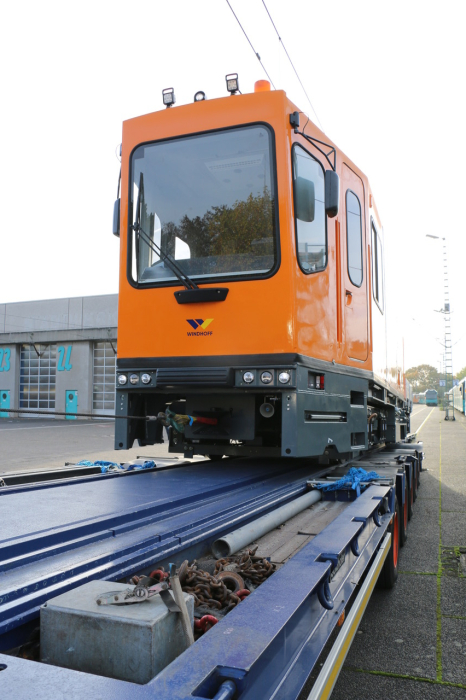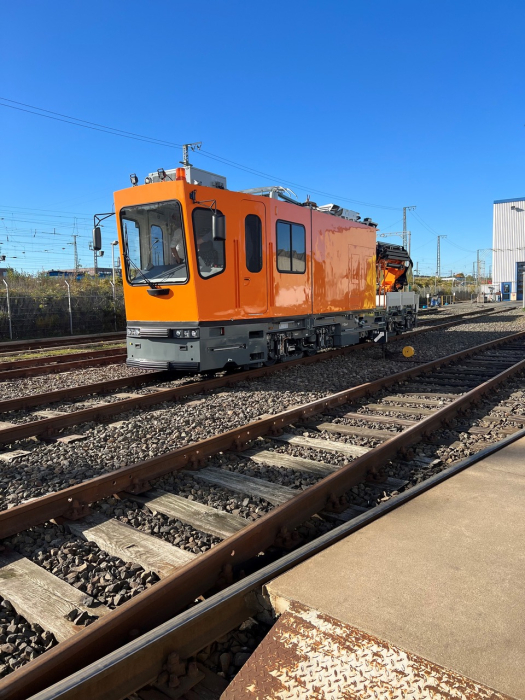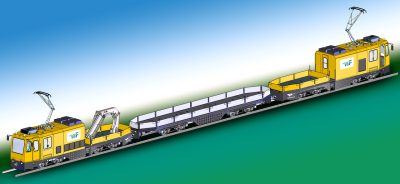GAF
“The Workhorse”: VGF’s new trackwork vehicle (GAF)
The VGF’s lightrail and tramway lines are 133.53 kilometers long, plus several kilometers of track on connecting lines and depots that are not used for regular service. They have to be maintained and, if necessary, repaired. Special vehicles are needed for this – also and especially on rails – and the VGF maintains a corresponding fleet of orange work cars. VGF is modernizing this fleet with a new track work vehicle, known as a “GAF” for short. With this new acquisition, VGF is beginning the gradual renewal of its work vehicle fleet, because for track construction work in the subway and streetcar network, VGF still uses “K” cars from the 1950s in addition to used transport cars or ballast lorries.
Three-part work train
The composition has been developed by VGF and WINDHOFF since spring 2020, it was delivered in November 2022, and commissioning is scheduled for spring 2023. It consists of three parts: firstly, two track work vehicles with driver’s cab, engine and loading area, one of which is equipped with a loading crane. The two vehicles are each about 13 meters long and have two bogies with four axles together. The work trucks have a fully air-conditioned cab with driver’s platform and enough space for up to six people.
Work train with electric drive
The GAF can be used on all lightrail and tramway lines. Two of the work cars have current collectors and can use traction current from the overhead line just like a streetcar. However, since track construction usually involves disconnecting the overhead line and the traction current, the two vehicles – and this is what makes them special – are equipped with accumulator batteries so that they can also be used without overhead wires. In addition, a diesel auxiliary power unit supplies the drive with energy via generators.
Electrically powered work trains have so far been the exception in German lightrail systems. In order to invest in a sustainable future and counteract possible driving bans in Frankfurt, those involved in the project had deliberately decided to move away from the previously mandatory diesel engine. Therefore, during the implementation of the order and the detailed vehicle development by VGF and WINDHOFF, the vehicles were equipped with an alternative and environmentally friendly auxiliary drive.
Rail transport vehicle
On the other hand, the train set includes a four-axle rail transport vehicle, which is approx. 17 meters long via coupling and has a 15.50 meter long loading area, on which 15 meter long rails can be driven to the construction sites or correspondingly bulky residual material can be transported away. The crane of the one work vehicle is designed to lift rails from the coupled transport vehicle and deposit them in the track bed, even under the overhead line in the subway tunnel, which is only 3.90 meters high.
Track construction and more
In the future, the new work train can be used for all work on the tracks of the lightrail and tramway lines in Frankfurt. It can transport everything needed for this, whether the 15-meter rails, construction materials and equipment or other equipment. It is also suitable for the underground transport of escalators or parts thereof.
Expansion of the vehicle fleet possible
In the future, VGF will be able to expand the train, initially procured in three sections, as needed, whether by adding additional rail transport cars, other – also low-floor – transport cars or ballast trucks. The only restriction is that, according to the German Tramway Operating Regulations (BOStrab), the length of the work train must not exceed 75 meters. The width is ultimately defined by the lightrail and tramway lines network in which the train is used. The work wagons are 2.40 meters wide, the rail transport wagon 2.20 meters, which is explained by its greater length and the associated possibilities for use in the VGF network. In the selected configuration, the train can be used on all routes, in all stations and at all stops of the VGF.
The train can be used in different configurations: three- or two-part, the work vehicles also solo. If two work vehicles are coupled together – whether with or without the rail transport car in the middle – the train set has unlimited bi-directional capability. This makes it extremely versatile.
Social Networks
© Stadtwerke Verkehrsgesellschaft
Frankfurt am Main mbH




